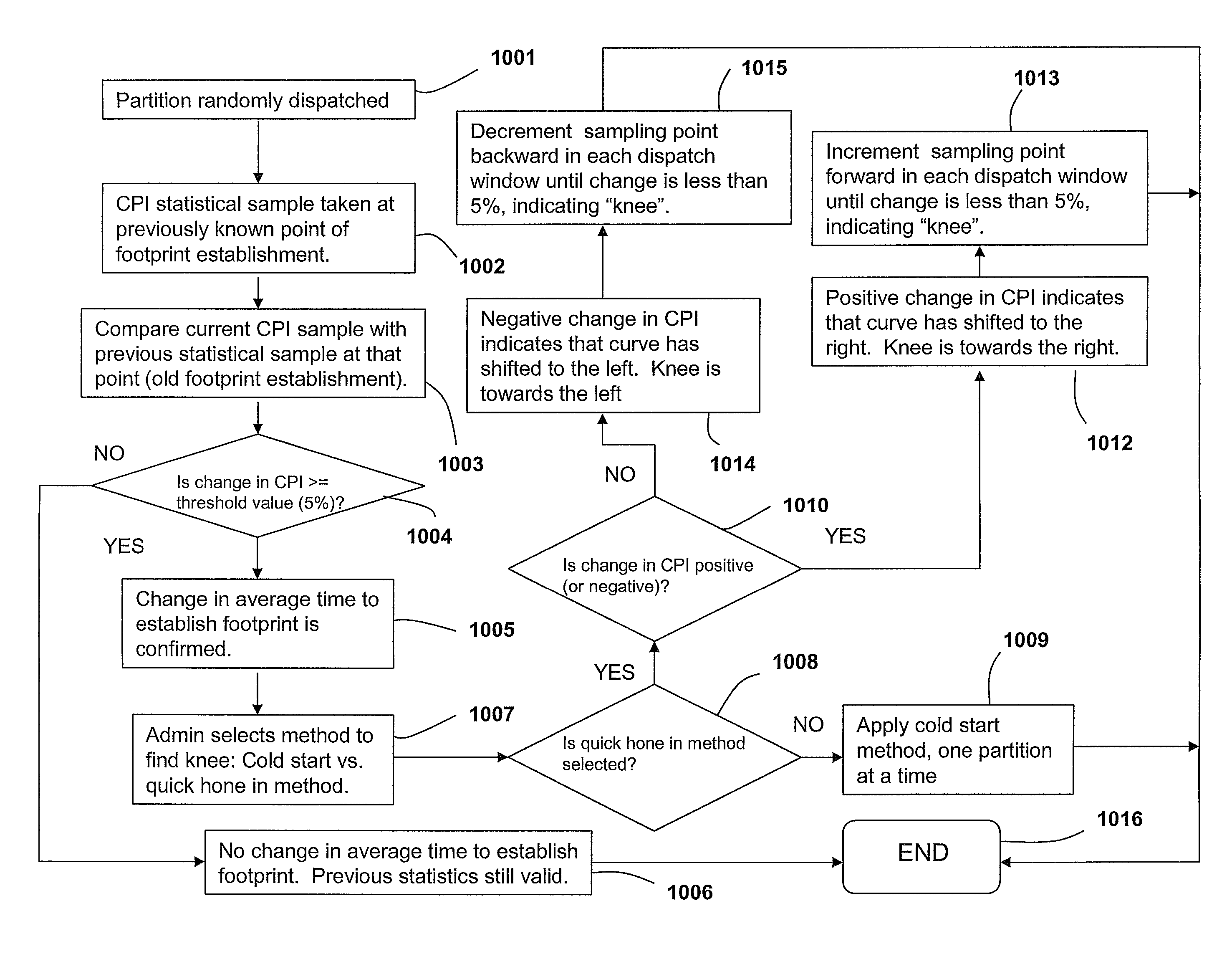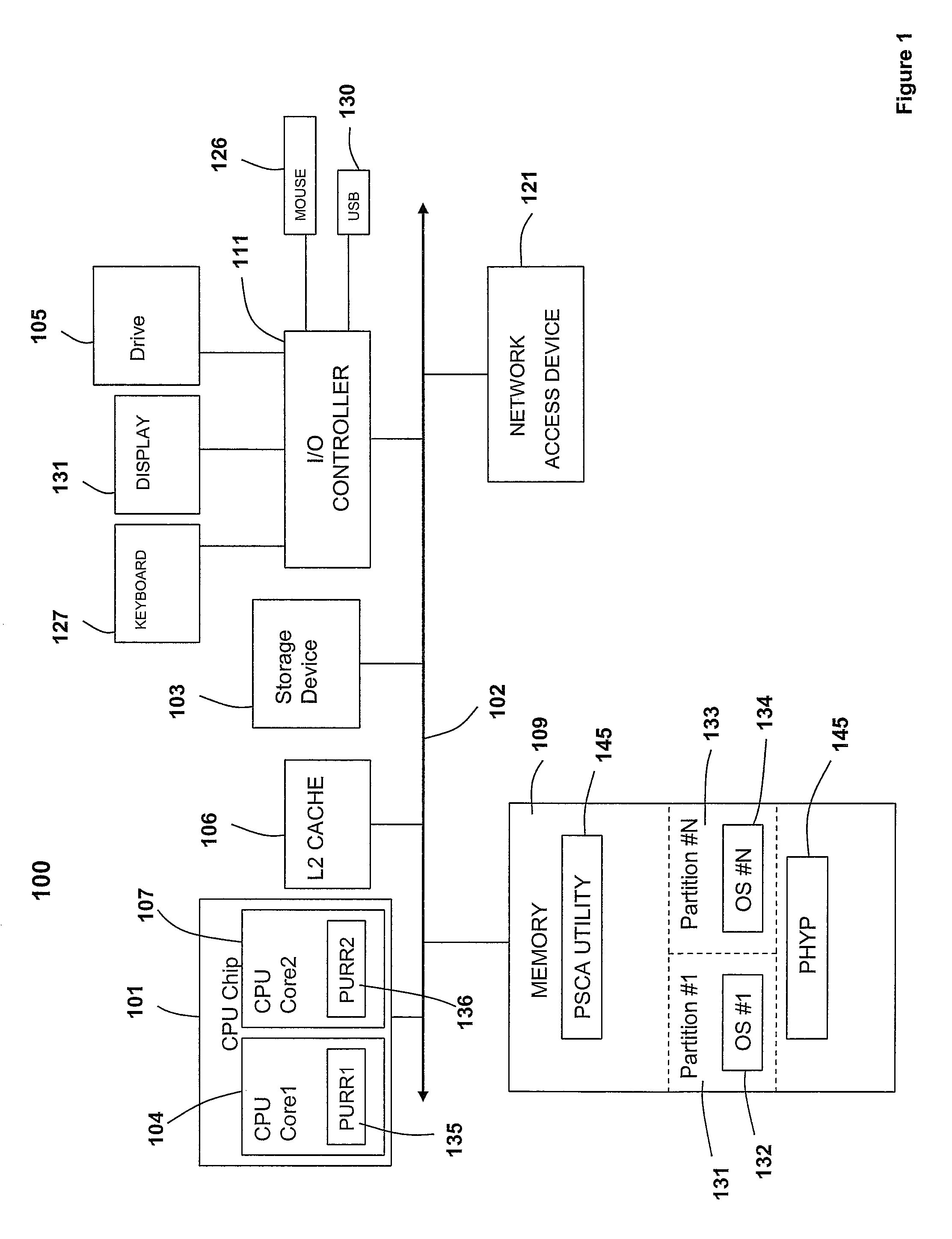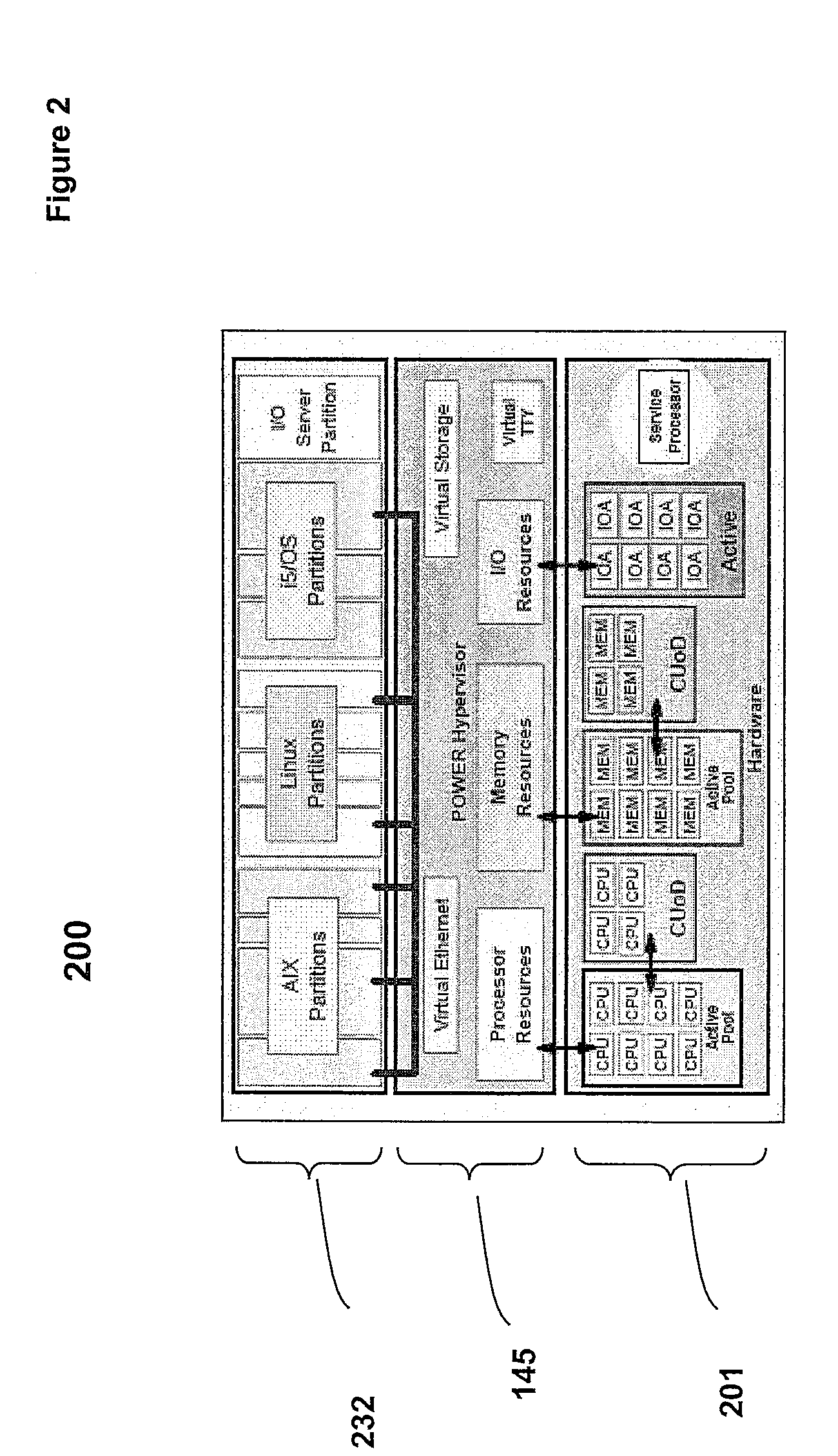Capturing hardware statistics for partitions to enable dispatching and scheduling efficiency
a technology of hardware statistics and partitions, applied in the field of data processing systems, can solve the problems of capped processing, inability of the next partition to utilize unused processing capacity, and inability of the original partition to be occupied, and achieve the effect of efficient scheduling and allocation of data processing resources
- Summary
- Abstract
- Description
- Claims
- Application Information
AI Technical Summary
Benefits of technology
Problems solved by technology
Method used
Image
Examples
Embodiment Construction
[0012]Disclosed is a method, system and computer program product for the granular collection and utilization of hardware statistical samples for the efficient scheduling and allocation of data processing resources. In particular, a Partition Statistics Capture and Analysis (PSCA) utility utilizes a number of special purpose registers called processor utilization resource registers (PURR) to collect the statistical samples for the accounting of partition processes. Among the statistical samples provided by the PSCA utility are one or more of the following: (1) instructions completed; (2) Level2 (L2) cache misses; (3) cycles per instruction (CPI), and / or (4) other statistics, which are selected based on the programming of the PSCA utility. Further, the PSCA utility provides these statistics for several purposes, including: (1) determining how long (time) the footprint of a partition takes to become established during the “cold start” period, i.e., during system instantiation; (2) dete...
PUM
 Login to View More
Login to View More Abstract
Description
Claims
Application Information
 Login to View More
Login to View More - R&D
- Intellectual Property
- Life Sciences
- Materials
- Tech Scout
- Unparalleled Data Quality
- Higher Quality Content
- 60% Fewer Hallucinations
Browse by: Latest US Patents, China's latest patents, Technical Efficacy Thesaurus, Application Domain, Technology Topic, Popular Technical Reports.
© 2025 PatSnap. All rights reserved.Legal|Privacy policy|Modern Slavery Act Transparency Statement|Sitemap|About US| Contact US: help@patsnap.com



